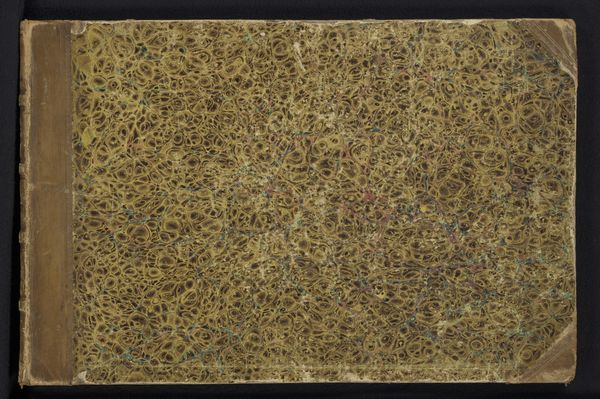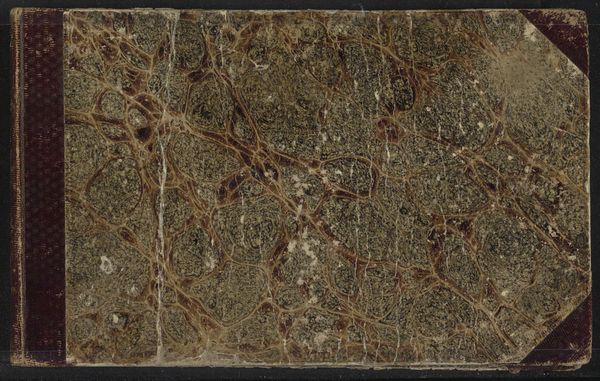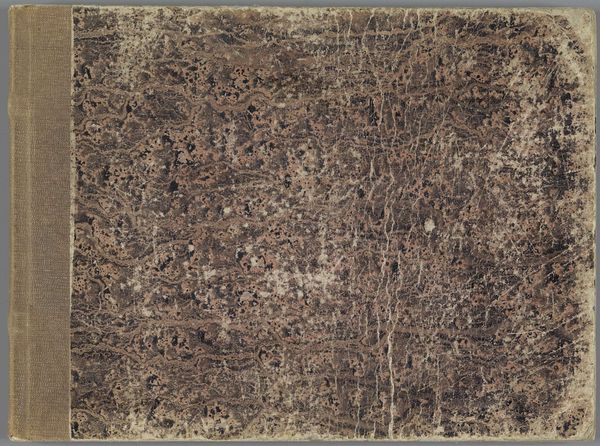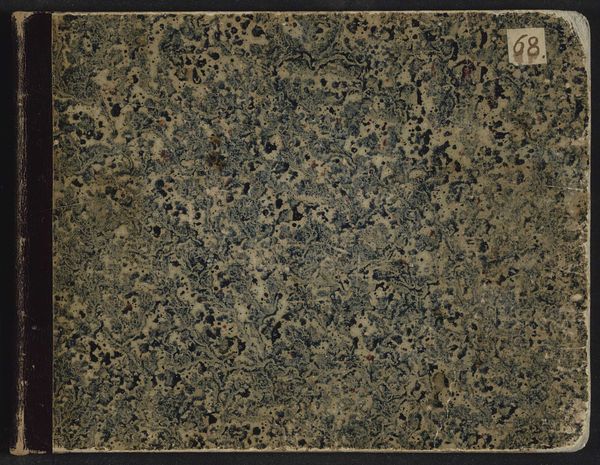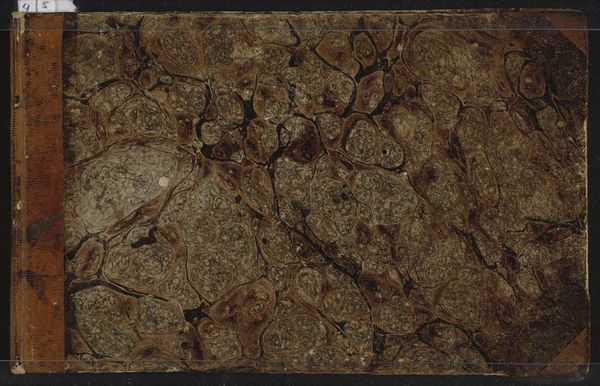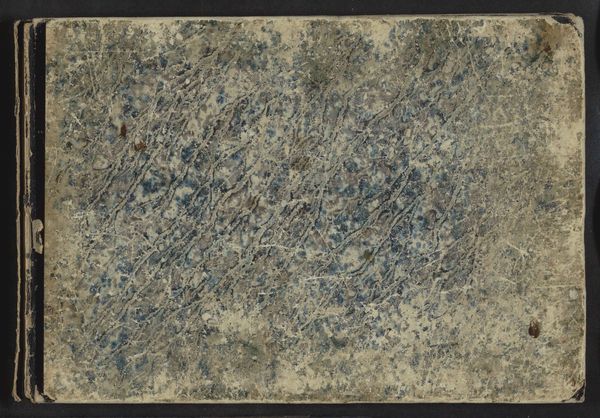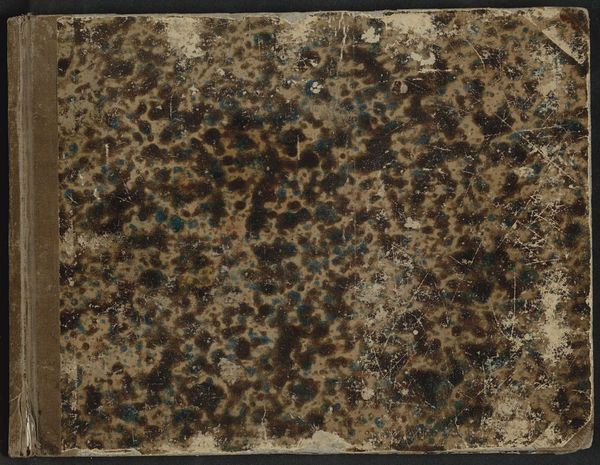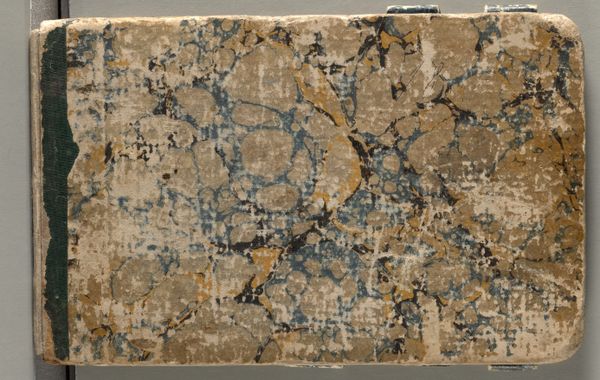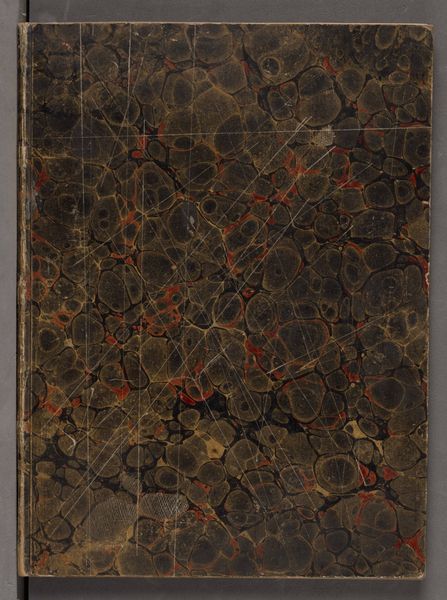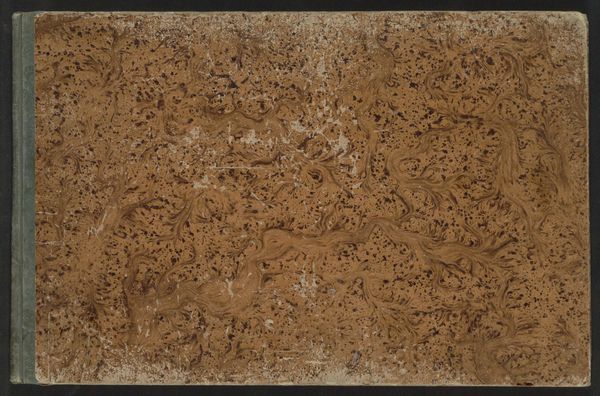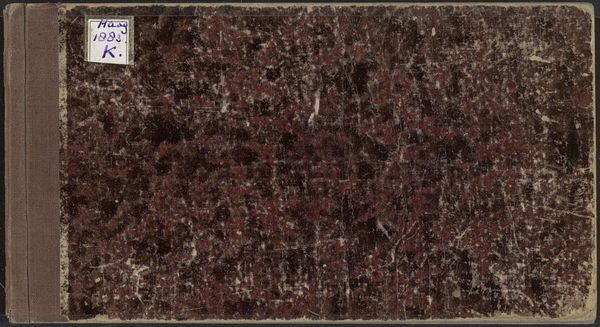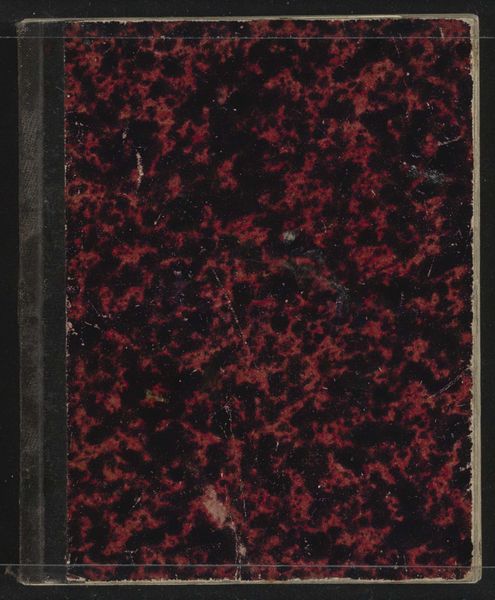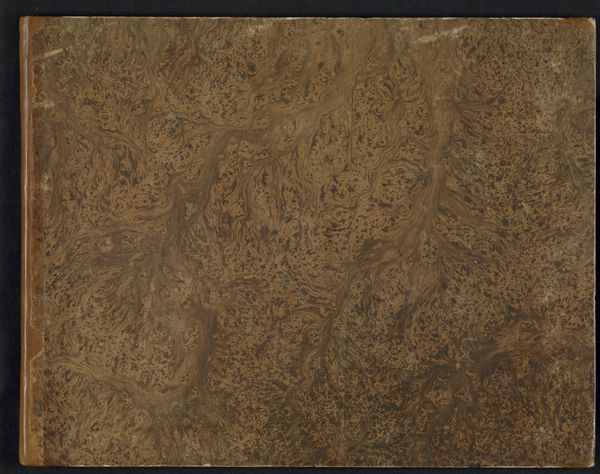
paper
#
natural stone pattern
#
naturalistic pattern
#
paper
#
geometric pattern
#
subtle pattern
#
abstract pattern
#
organic pattern
#
repetition of pattern
#
pattern repetition
#
layered pattern
#
organic texture
Dimensions: height 203 mm, width 166 mm, thickness 4 mm, width 327 mm
Copyright: Rijks Museum: Open Domain
Curator: Here we have Maria Vos’s "Sketchbook with 19 Pages," dating back to 1858 and housed right here at the Rijksmuseum. My first impression? It's quite mesmerizing; the cover alone seems to pull you in, like looking at a detailed map of an alien world or microscopic organisms in a drop of water. Editor: Mesmerizing is one way to put it. I'm immediately drawn to the surface itself, which appears to be marbled paper. The organic patterns really catch my attention, recalling how marbled paper would've been manufactured using a tray filled with thickened liquid onto which pigments are floated and then carefully transferred to the paper's surface. It represents an intersection of material and method, and how labor contributes to an artwork. Curator: Absolutely, and those organic forms take on new significance when considered within the broader social context of the time. Patterns like this were not just decorative, they appeared across the textiles and wallpapers of domestic environments in that period. So, does this reference middle class, and potentially gendered, environments where a woman artist like Vos could express creativity? Is this a way of finding liberty from constraint? Editor: Precisely! It makes us think about consumption, skill and production and also the accessibility of artistic techniques. Vos makes no clear distinctions between what we think as art and the things of everyday life. Also the scale is relevant - how it encourages close inspection of materials and the processes used? Curator: Considering the rise of industrialization at the time, this dedication to these organic patterns might have been a subtle push back against mechanized, uniform production, a kind of feminist rebellion through embracing the handmade? It begs questions about authorship and labor. Editor: And perhaps even about value, the value we place on handcraft in contrast to mass-produced goods. By presenting something so tactile and carefully crafted, Vos challenges the dominant modes of production. The layers, subtle textures…they speak volumes. Curator: I appreciate how exploring materiality helps us challenge conventional notions of art historical and socio-economic boundaries. What began as a simple pattern becomes a canvas of broader ideas! Editor: Exactly! What seems merely decorative reveals its complexity, urging to investigate not just the 'what' but, critically, the 'how'.
Comments
No comments
Be the first to comment and join the conversation on the ultimate creative platform.

